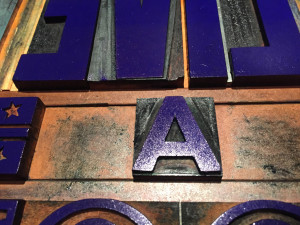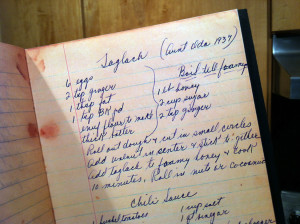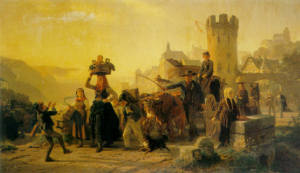Ask any letterpress printer about the number 0.918 and if that printer is worth his or her salt, they should give you a hearty smile and a twinkle of the eye. It is an important number in their craft: 0.918 inches is the standard height of type. From the base of the type to the printable surface, no matter if it’s metal type so small you need to set it with tweezers or a piece of wood type so large you can fit only one character at a time into the press, all of it measures the same 0.918 inches in height.
I’m a printer and a lot of the folks who read this blog are printers and book artists. This is because we know each other (sometimes only by name) and we support each other (sometimes without ever meeting). We are a tight knit bunch, book artists and printers. And today is a big day for the printers. It is September 18, 9/18, the closest iteration of 0.918 we get on the calendar. It is Letterpress Appreciation Day.
Printshops around the globe will be celebrating, and if they’re not, they should be. Convivio Bookworks is sponsoring Letterpress Appreciation Day at the Jaffe Center for Book Arts, as we do each year. We bought the center 50 pounds of popcorn kernels for the event and for a film festival that ran all this week on the run up to Letterpress Appreciation Day. So today, I plan on eating popcorn, printing if I’m lucky, and remembering all the great printers I have known and the ones I have never met but whose work has influenced and informed my own through example and the power of good timeless design. The ones I have known have all been real characters, which, when you think about it, is the essence of any good printshop and of any good story. Make the story you live a good one.
Image: This year’s Letterpress Appreciation Day message of positivity reads “Live a Good Story.” It was set in historic wood and metal types by JCBA student Charles Pratt and we’ll teach folks to print it themselves on the center’s 1890 Wesel Iron Handpress, just as my friends David Wolfe and Glenn House taught me so many years ago. Thanks Charles. Thanks David. Thanks Glenn.


